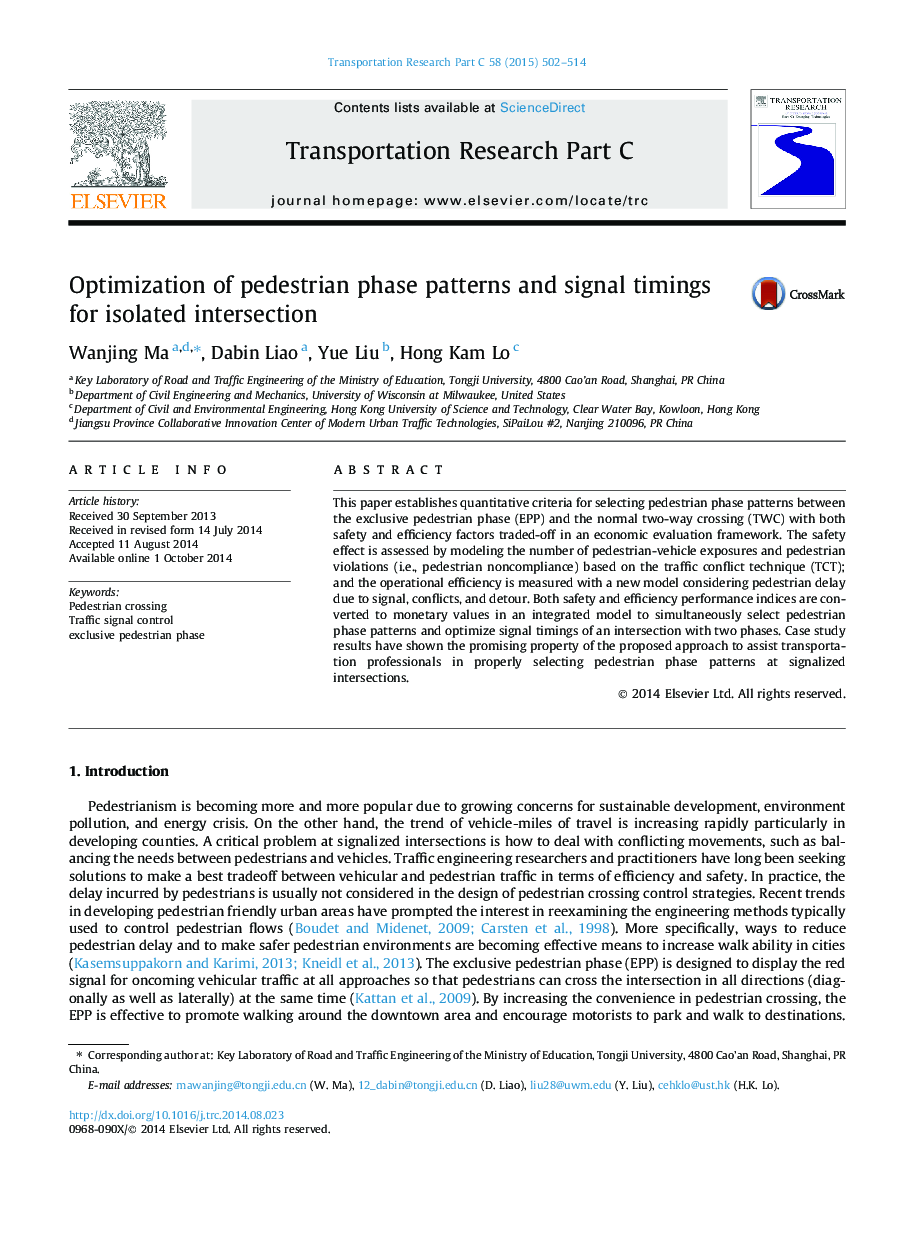| Article ID | Journal | Published Year | Pages | File Type |
|---|---|---|---|---|
| 524936 | Transportation Research Part C: Emerging Technologies | 2015 | 13 Pages |
•Integrated both safety and efficiency factors in an unified evaluation framework.•Established quantitative criteria for selecting pedestrian phase patterns.•EPP phase pattern is more suitable under the situation with higher turning ratios, and pedestrian volume.
This paper establishes quantitative criteria for selecting pedestrian phase patterns between the exclusive pedestrian phase (EPP) and the normal two-way crossing (TWC) with both safety and efficiency factors traded-off in an economic evaluation framework. The safety effect is assessed by modeling the number of pedestrian-vehicle exposures and pedestrian violations (i.e., pedestrian noncompliance) based on the traffic conflict technique (TCT); and the operational efficiency is measured with a new model considering pedestrian delay due to signal, conflicts, and detour. Both safety and efficiency performance indices are converted to monetary values in an integrated model to simultaneously select pedestrian phase patterns and optimize signal timings of an intersection with two phases. Case study results have shown the promising property of the proposed approach to assist transportation professionals in properly selecting pedestrian phase patterns at signalized intersections.
Graphical abstractFigure optionsDownload full-size imageDownload as PowerPoint slide
